If you are looking for a beautiful, low-maintenance perennial to spruce up your garden, Russian sage is worth considering.
In this comprehensive growing guide, we will tell you all about the basics of this plant, as well as ideal growing conditions and directions for planting and maintaining it.
You can use the table of contents below to jump immediately to the section you want, or read through the full guide for all the info you need on Russian sage.
Jump to:
- What is Russian Sage?
- Russian Sage Basics
- Where Does Russian Sage Grow?
- Why Grow Russian Sage?
- Russian Sage Landscaping Ideas
- Recommended Russian Sage Varieties
- When Do Russian Sages Bloom?
- How Long Do Russian Sage Plants Bloom?
- When to Plant Russian Sage
- Ideal Growing Conditions for Russian Sage
- How to Plant Russian Sage
- How to Care for Russian Sage
- Recommended Companion Plants for Russian Sage
- Frequently Asked Questions About Growing Russian Sage
- Where to Buy Russian Sage
What is Russian Sage?
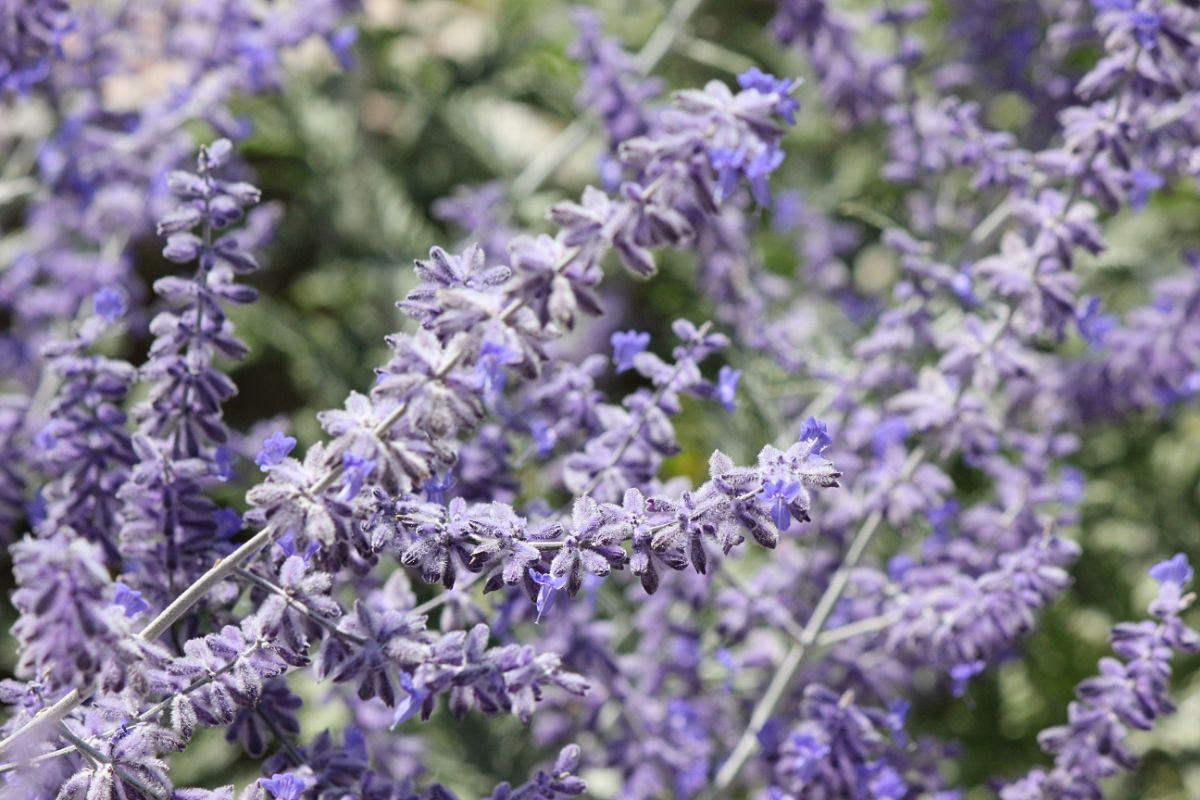
The name “Russian sage” refers to a plant with the scientific name Salvia yangii. Sometimes, you will also see it listed with the scientific name Perovskia atriplicifolia. While that used to be the plant’s scientific name, after it was moved into the Salvia (sage) genus in 2017, the name was changed to Salvia yangii.
Indeed, before Russian sage was a member of the sage genus, it was still called “Russian sage.” But it was frequently explained that this was a misnomer, as it was “not a sage.” You will still encounter this in a lot of resources since the change is still relatively recent. But rest assured, under the current taxonomy, Russian sage is sage.
One thing it isn’t is Russian. It actually comes from Afghanistan, Pakistan, and the surrounding parts of Central Asia.
This perennial has become very popular. Indeed, the Perennial Plant Association selected it as Plant of the Year in 1995. Also, the Royal Horticultural Society gave the Award of Garden Merit to the cultivar of this plant called “Blue Spire.”
Russian Sage Basics
Zones: 4-9
Blooming season: Late spring into fall
Expected height: Up to 5 feet
Soil: Well-drained soil
Sun: Full sun
Where Does Russian Sage Grow?
As mentioned, originally this plant came from Central Asia, specifically at high elevations. But because you can grow it successfully in zones 4-9, it is now cultivated throughout the world.
Why Grow Russian Sage?
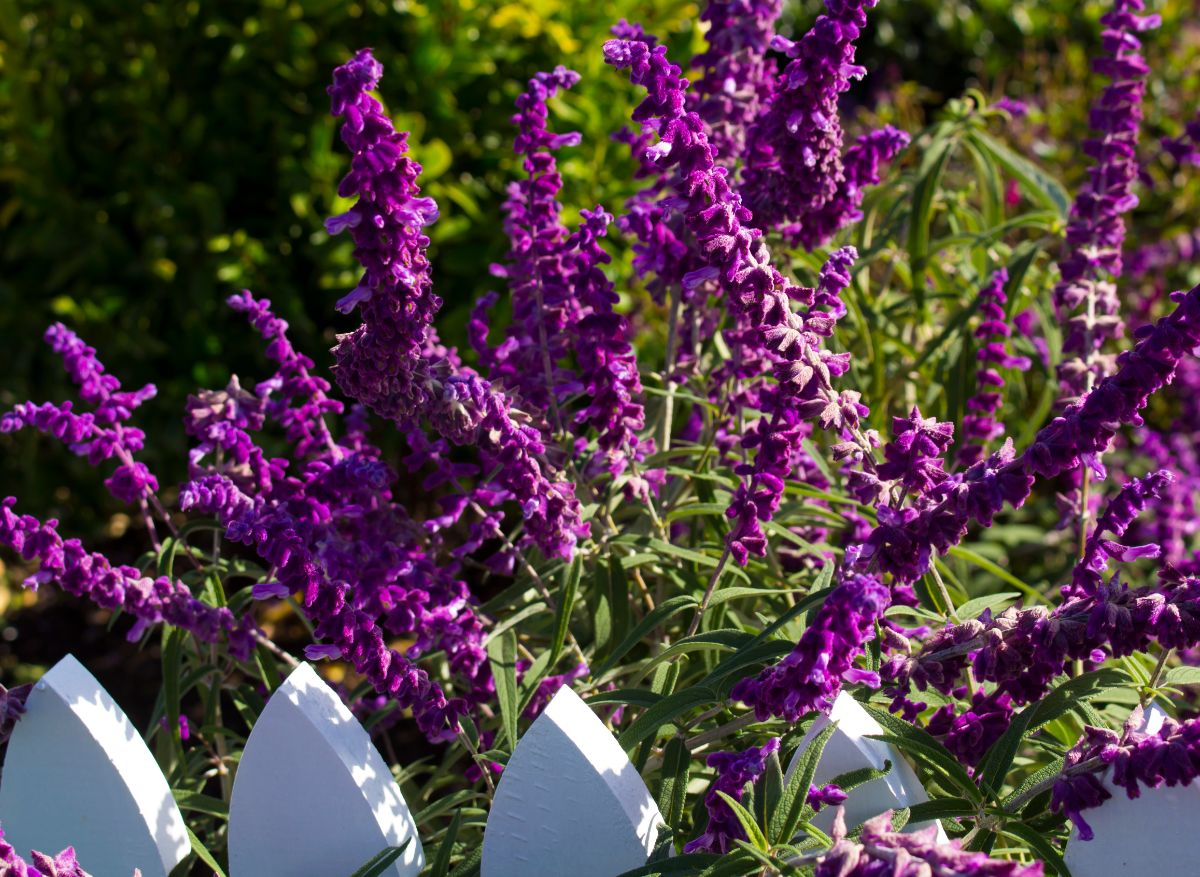
Here are a few reasons to consider planting Russian sage in your perennial gardens:
- Russian sage plants are drought tolerant. During the first year, they do need extra water. But once established, they will thrive even during dry conditions.
- It is easy to get started with this fast-growing plant. You can bring beautiful blooms to your garden in what will feel like no time at all.
- Insects typically are not a big problem for Russian sage, nor is disease.
- Russian sage is tolerant of a wide variety of soil conditions. Even in poor soil, it can be happy.
- You can expect to delight in a display of butterflies, hummingbirds and bees among your Russian sage plants. Pollinators love these tubular flowers.
- You can harvest the flowers (but not the leaves) of your Russian sage plants for consumption. Their flavor is typically described as “peppery.” They make a nice garnish for certain dishes, salads in particular. Some people like them in tea as well.
- You do not have to throw away the leaves, even though you cannot eat them. Instead, consider drying them. They go well in potpourri.
- Russian sage is a rabbit and deer-resistant plant.
- Russian sage can be used as cut flowers for arrangements.
- Some people grow Russian sage to make dye.
- Not only the flowers of Russian sages are beautiful, but so are the fragrant foliage.
- Russian sage plants can blossom throughout the season with little effort on your part. You will love the extended bloom time!
- In fact, Russian sage is all-around a great low-maintenance plant, requiring little in the way of water, fertilizing, or even pruning.
Russian Sage Landscaping Ideas
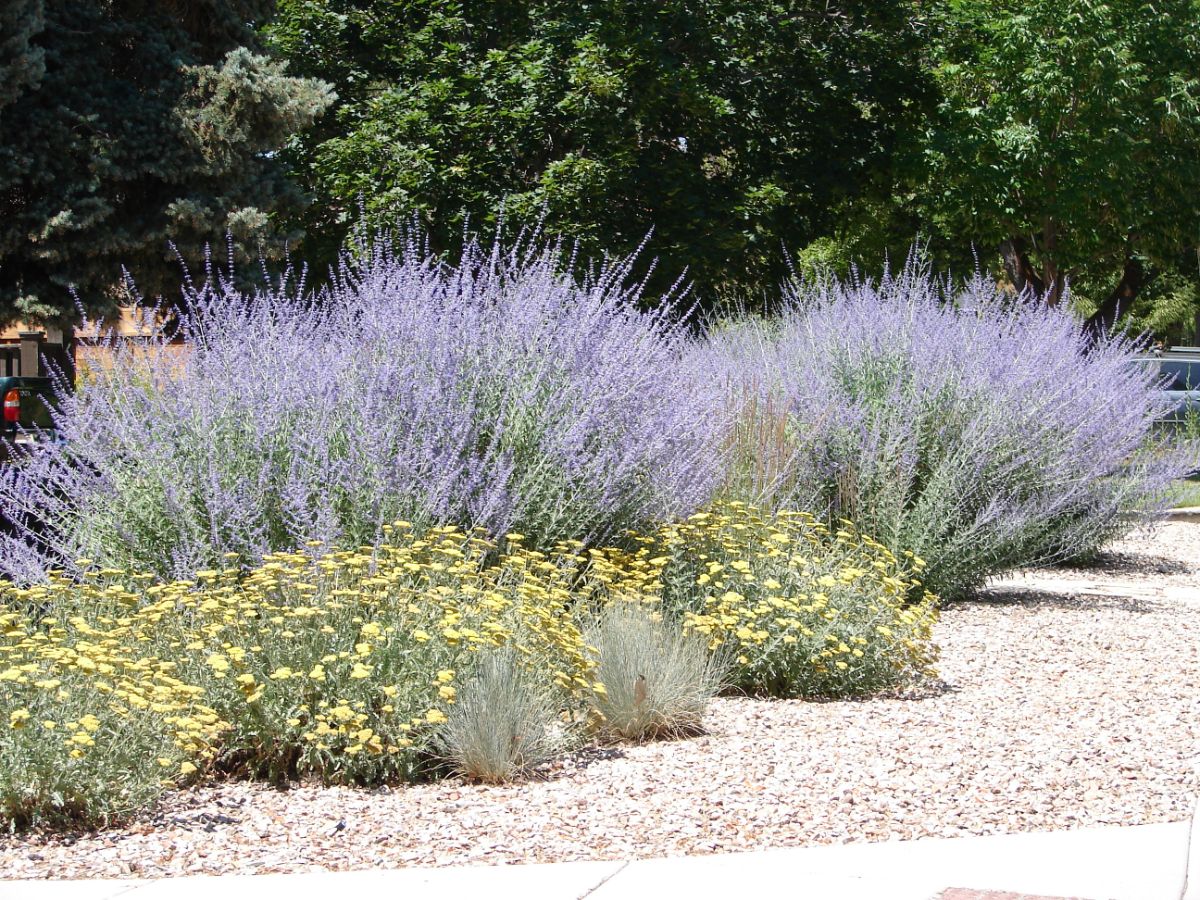
Now that you know some fantastic reasons to grow Russian sage, let’s check out some landscaping ideas worth considering.
- Perennial borders. The University of Arkansas System Division of Agriculture Research & Extension says, “The Russian sage is an ideal plant for combining in the perennial border because its soft, gray foliage blends well with plants of any texture or color and softens their impact. Its spiky blue flowers blend well with other flower colors without clashing … A single plant of Russian sage in the midst of a planting of Blue Rug Juniper would make an elegant statement.”
- Rock and gravel gardens. Russian sage is among the perennials that do best in rock and gravel. So, consider making it one of the focal points of either a rock garden or a gravel garden.
- Cottage gardens. The voluminous clumps of Russian sage plants can make a nice feature in a traditional cottage garden.
Recommended Russian Sage Varieties
Whether you are looking for the perfect low-maintenance ornamental plant for your border plantings, cottage gardens, or rock or gravel gardens, you have a wide variety of Russian sage cultivars to choose from. Here are a few.
- Blue Steel: If you want a variety of Russian sage that will provide you with an abundance of lavender-blue flowers, it is hard to go wrong with the “Blue Steel” cultivar. You’ll see blossoms appearing as early as mid July and lasting as long as October. The aromatic foliage has citrus notes.
- Blue Spire: This form of Russian sage can reach as high as 3 feet, and produces purple flowers.
- Blue Haze: Another variety of Russian sage you may like is “Blue Haze,” named for its light blue flower color.
- Little Spire: In search of a dwarf variety of Russian sage? The blue-purple flowers on this cultivar grow on stems that max out at 1.5 to 2 feet.
- Longin: If you want a narrow form of Russian sage, you might enjoy the “Longin” cultivar. This is also a good option if you are tired of your stems falling over. They are sturdier than average on this variety, and are less likely to need staking or other support.
- Filigran: The lavender-blue flower spikes on this cultivar are only part of its charm. Along with beautiful flowers, this variety of Russian sage features lacy aromatic leaves.
When Do Russian Sages Bloom?
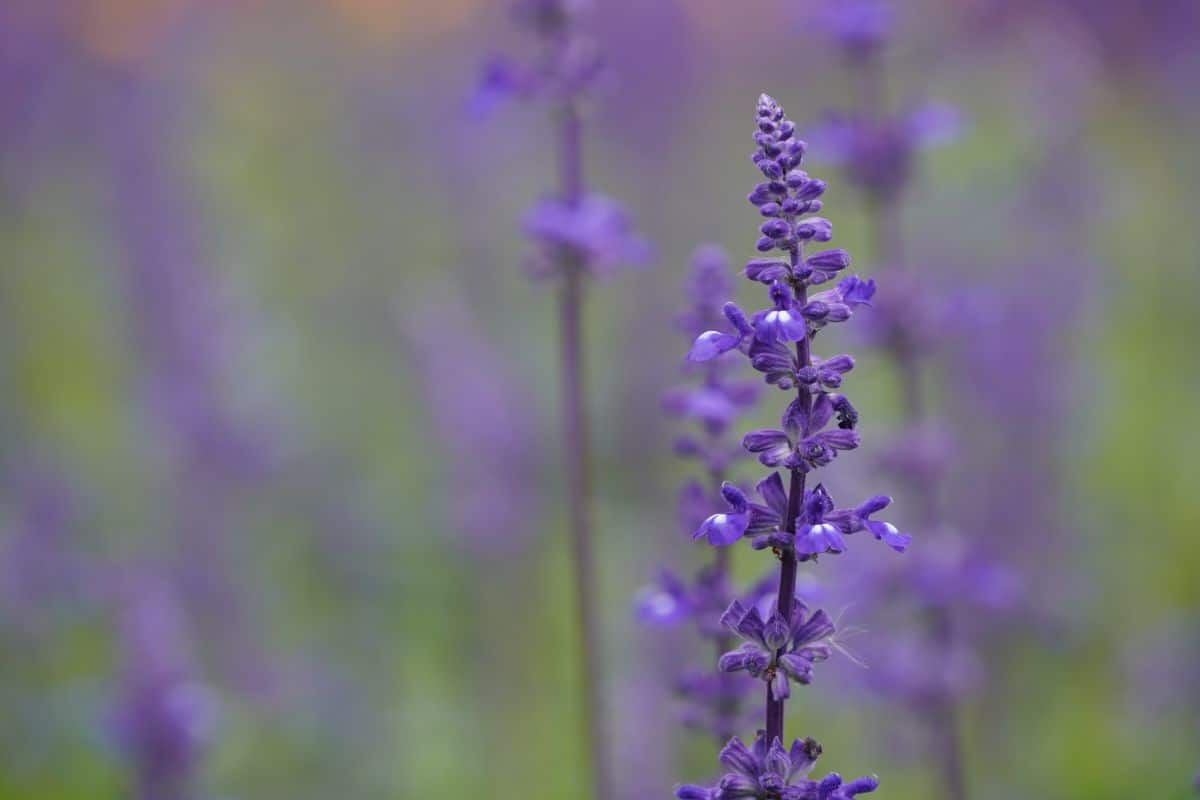
Your Russian sage flowers will begin blooming in spring, and will continue through autumn.
How Long Do Russian Sage Plants Bloom?
If you prune Russian sage routinely, you can get it to blossoms repeatedly for months.
When to Plant Russian Sage
You can plant Russian sage pretty much anytime during spring. Some gardeners seem to prefer early spring, and others late spring. You might want to wait until the last frost is over, and then put Russian sage in the ground.
Ideal Growing Conditions for Russian Sage
To grow Russians sage successfully, you need to know what conditions are suitable for this perennial. Let’s go over the requirements for soil, sun and water in detail.
How Much Sun Do Russian Sage Plants Need?
If possible, you should always plant Russian sage in full sun, with a minimum of six hours of direct sunlight daily.
What happens if you plant it in partial shade? Well, it will still probably grow, but it is going to want more sun. So what it is going to do is try and lean closer to the light. That means that it will not stand upright as well as you might like. Planting it in the sun can help to prevent it from leaning over.
Later on in this post, we will talk about staking Russian sage, which can also be a solution.
What Type of Soil is Right for Russian Sage Plants?
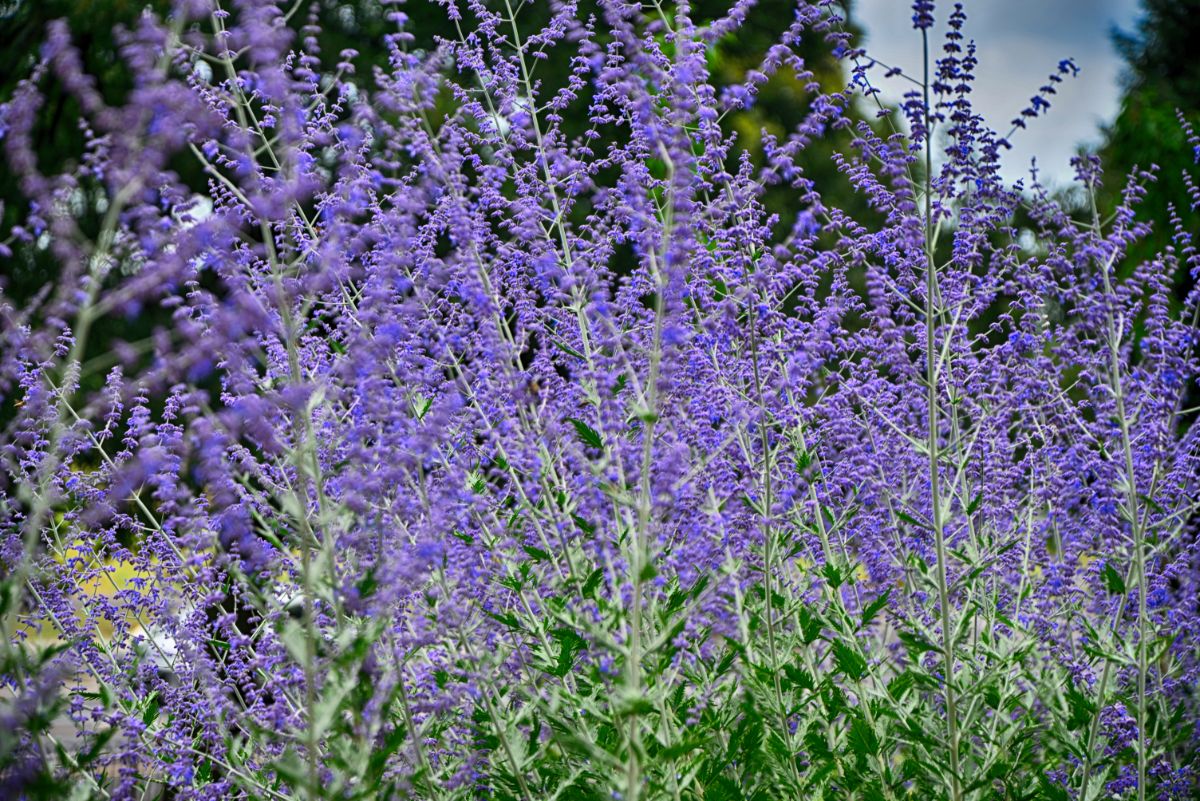
Russian soil is delightfully non-picky about soils. Average soil, poor soil, rocky soil, and alkaline soil are all ideal. The biggest requirement is just that you choose a form of well-draining soil. Can you get away with clay soil? Sure, but if it isn’t draining well, you would do well to mix in some sand to loosen it up before you plant your sage in it. Otherwise, it is not going to do well.
How Much Water Do Russian Sage Plants Need?
During the initial season after planting, you will have to water your Russian sage plants weekly. This is important for root development.
But after Russian sage plants are established, you may almost never need to water them. Usually, nature takes care of their watering needs.
They are drought-resistant, but they can dry out if drought conditions go on for a long time. In a situation like that, you will need to provide the occasional water.
How to Plant Russian Sage
When it comes to planting Russian sage, you have options. You can either start it from seed, or you can plant a nursery plant. Below, we go over directions for container and ground planting of nursery plants, and then we will talk about how you can start this perennial from seed.
Container Planting
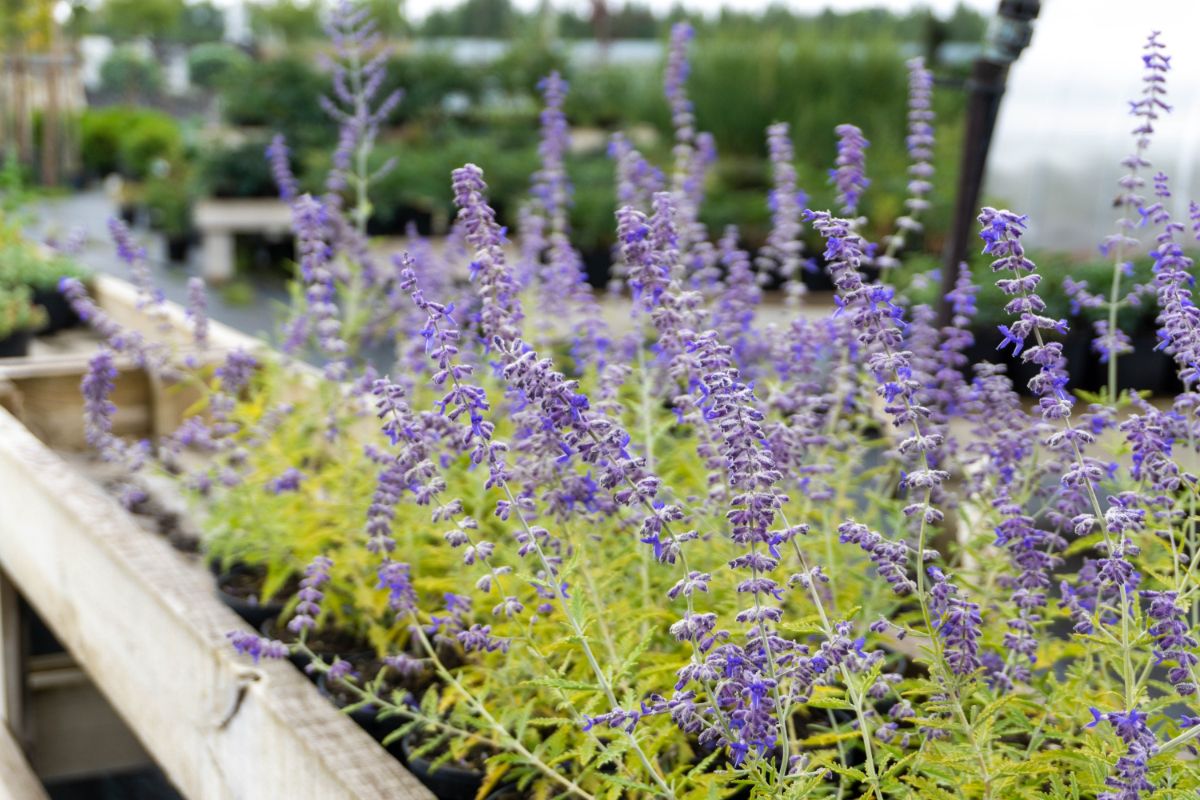
Russian sages can make great container-grown plants. If you want to go this route, here are the basic steps to growing Russian sage as a container plant:
- Select a pot. In general, the only criteria are that it be pretty big and feature holes for drainage.
- Line the pot. Because you are going to be filling your pot with lightweight mix, it is easy for it to slip through the drainage holes. To prevent that from happening, line the bottom of your pot with mesh or filter paper.
- Put lightweight potting mix in your container. If you only have access to a standard potting mix, that is fine, but you are going to want to consider adding some perlite or sand. Also think about mixing in some fertilizer.
- Make a hole and insert the plant. Backfill when you are done.
- Water your plant after you are finished.
- Pick a spot for your potted Russian sage. Remember, it needs to get at least six hours of direct sunlight every day, and will look best in full sun.
Continue to water your Russian sage plant weekly as it establishes. Even after it finishes establishing, you may want to give it more water than you do any Russian sage plants you have in your garden beds. Water can evaporate quickly from a container. Although this plant prefers conditions on the dry side, you do not want it to dry out.
Just as potted Russian sage benefits from regular watering, it also can be wise to fertilize it every other week or so while establishing. A regular, water-soluble general-purpose fertilizer should do.
Live in a cold location? Your Russian sage plants may have a difficult time surviving the winter if they are in containers. There are a couple of possible solutions:
- Your first option is to use a nursery pot that won’t freeze in the ground for your Russian sage. You can put this inside another pot if you do not like its appearance and want more stability during the summer. But when winter come around, you can dig a hole and plant the nursery pot in the ground with the sage inside it. This will provide protection from the cold. You can then dig it out again when the weather starts warming up, and place it back inside the decorative pot.
- The other option is easier, and that is just to overwinter Russian sage in containers indoors. It should go in a cool environment like your garage. But if the temperature in there drops to freezing, it is too cold. Be aware that if you are keeping Russian sage indoors like this, it will dry out faster than it would outside, so it will require extra watering.
Some people just let the winter kill their Russian sage plants in containers and replace them the next year, but that is very much unnecessary.
Ground Planting
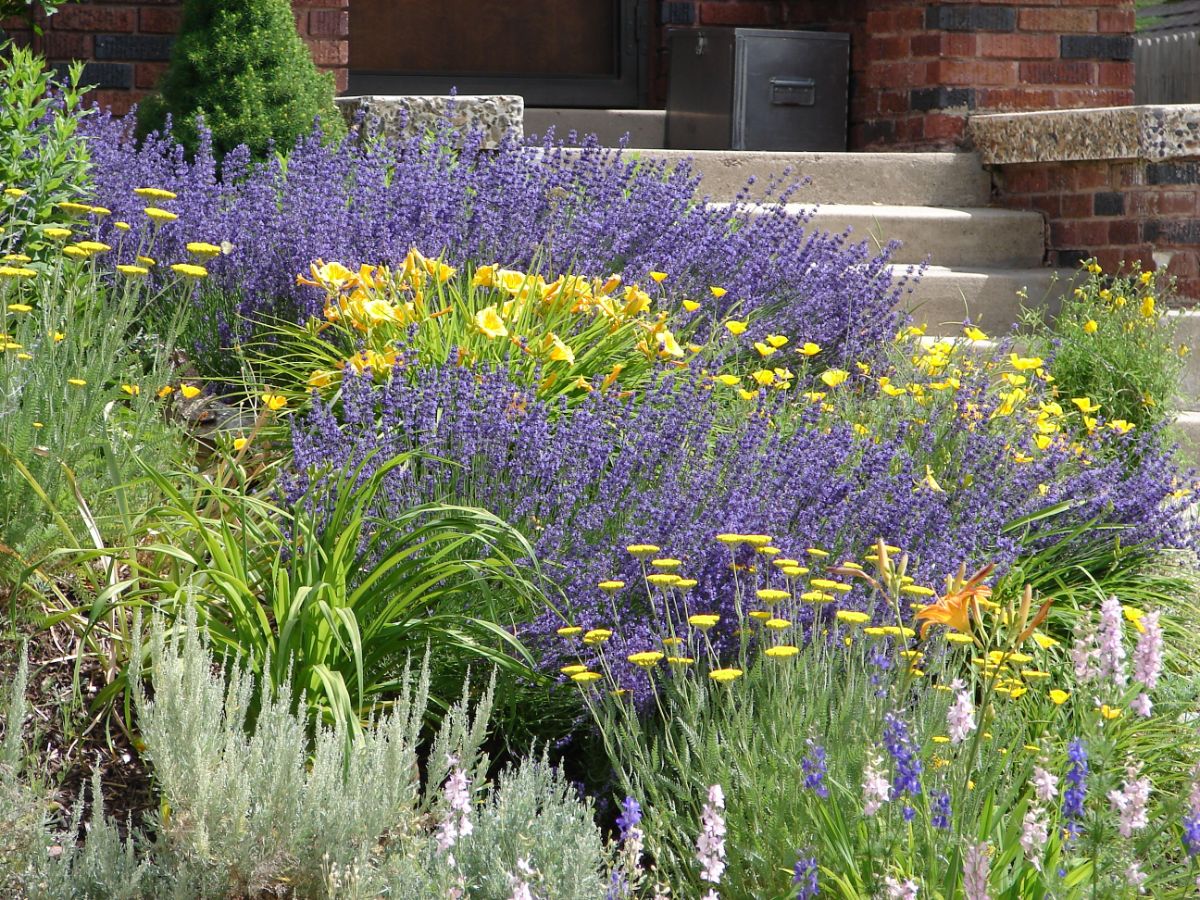
Now you know all about planting and caring for version sage in containers. How do you plant it directly in your garden beds? Let’s go over the steps:
- Choose an appropriate place in your garden for your Russians age. They will do best in full sun.
- Amend the soil if necessary. A bit of compost or fertilizer at planting time may be helpful (not too much), and if your soil is really dense, consider mixing in some sand so that it can drain better.
- Dig holes and plant your Russians sages. Give them each around 2-3 feet of space from one another so that they do not crowd together.
- Water well after planting, and continue watering weekly during the establishment phase. Indeed, you may wish to continue with the relatively frequent watering for the entirety of this first season. But next season, you can reduce the watering schedule.
Starting Russian Sage from Seed
If your goal is to have Russian sage in blossom this upcoming growing season, you should get a nursery plant, rather than starting with seeds.
But if you are not in a rush, you certainly can grow Russian sage from seeds. Just be aware that you may not see any flowers on your plants for several years after you plant them. Plus, germinating takes some time too. Here are the steps.
- First, cool down your seeds to prep them. The easiest way to do that is just to put them in the fridge for a month or a little bit more. You can keep them in a plastic bag. Just make sure that they stay dry. What is the point of doing this? It will shorten the length of the germination process.
- Grab a plastic seed tray and fill it with seed starter soil mix.
- Use a spray bottle to mist the surface. You are aiming to saturate the soil mix, but you also need to make sure it drains before you proceed any further.
- Sprinkle your seeds on top of the soil. Gently push them down, but do not bury them. They need light to germinate.
- Put a cover or some plastic wrap over top to hold in moisture.
- Choose a spot to germinate your seeds. While you do not want to keep the seeds in the dark, you also do not want them to be under direct sun. Keep the light filtered, and do not expose them to heat either. The best temperature range is around 60-65 degrees Fahrenheit.
Check the moisture levels often. When necessary, gently mist the soil and then put the cover back on.
How long will it be before the seeds sprout? At the short end, you are looking at a month or so. At the longer end, it might take four months.
- Once you finally see the sprouts appear, you will need to take the cover off of the container. Continue to mist and care for your seedlings.
- Wait until the sprouts have had a chance to grow a bit, and then remove them from the starter trays. Transfer them to pots.
- After the last frost has passed in springtime, you can start hardening the plants by taking them outdoors, then back indoors, then back outdoors, and so on.
- Transplant the new Russian sage plants into permanent containers and/or your garden beds.
How to Care for Russian Sage

Now that you have planted Russian sage, how do you keep it healthy and blooming? Let’s go over recommendations for fertilizing, staking, mulching and more.
How to Fertilize Russian Sage
Some compost in spring can be good for Russian sage plants, and/or fertilizer at that time of year. But there is no reason to go overboard on fertilizing these plants. If you do, you are more likely to do harm than good.
You should not fertilize your Russian sage plants more than once a year if they are directly in your garden beds.
While spring is the most common time for fertilizing, some people do so in fall. Other gardeners never fertilize Russian sage.
How to Mulch Russian Sage
The only reasons you would likely want to mulch around Russian sage are if you are concerned about weeds encroaching on it or if you want to insulate the ground during winter.
You should not use traditional mulch, because this can actually result in moister soil than is ideal for this perennial. Combined with heavy winter precipitation, that can be a recipe for rot.
Instead, you should think about just putting down some gravel. It will provide the benefits you are looking for without trapping moisture as badly.
How to Stake Russian Sage
Is staking Russian sage necessary? That depends on where you plant it and what look you are going for. University of Wisconsin-Madison explains, “Once well-established, Russian sage is easy to grow, with essentially having no disease or insect problems. The plants tend to flop a little, especially when young. Russian sage can be staked, or planted near other plants that will support them. They can also just be let go to provide a more informal look.”
How to Prune Russian Sage
Let’s discuss pruning your Russian sage. The requirements in this area are pretty minimal. How involved it gets is very much up to your personal preference.
When to Cut Back Russian Sage
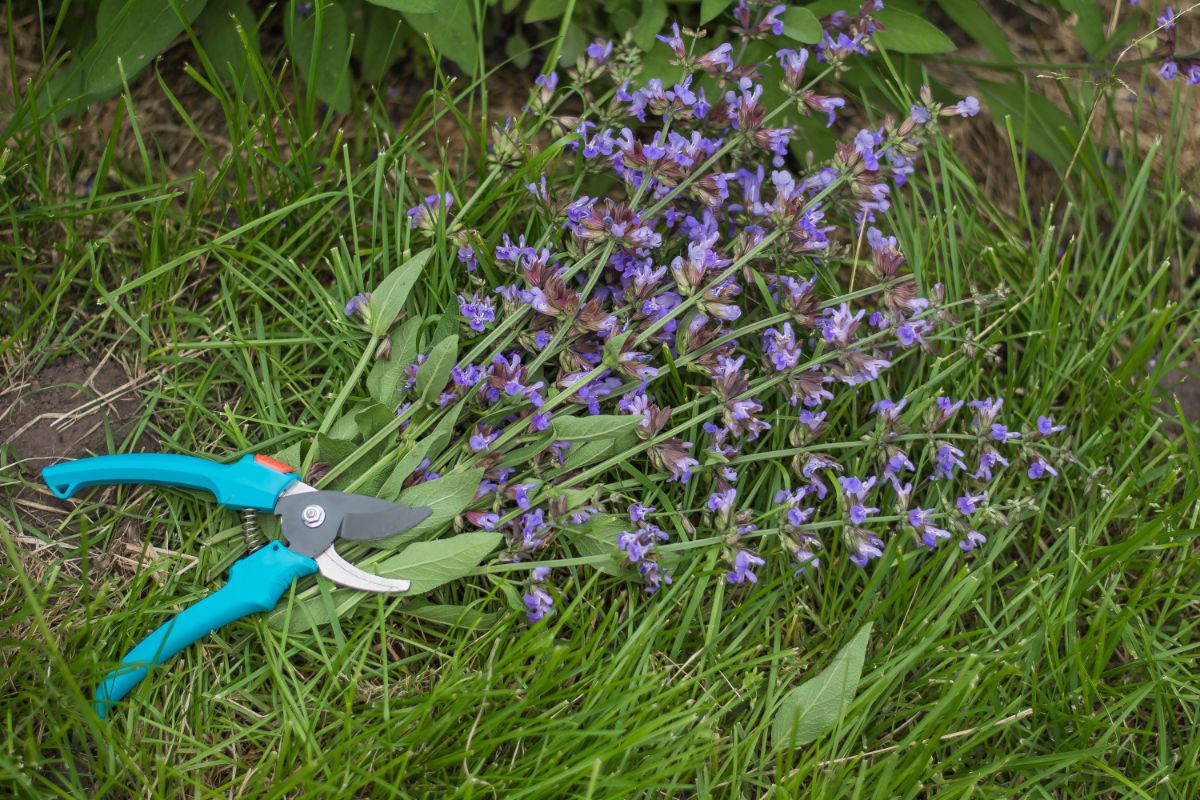
You have two options for when to cut back Russian sage after the growing season. You can either do so once the plant is done blossoming in late fall, or you can wait until early in springtime to do it.
When is best? That depends entirely on what you are going for. Some people like the appearance of the stems and seedheads during winter. Other people don’t. Cut them back if you want to get rid of them, or keep them around for your winter landscape if you enjoy them.
How to Deadhead Russian Sage
Do you need to deadhead Russian sage to make it bloom repeatedly? Sometimes it can help. If you see a reduction in blossoms, cutting away those parts of your sage may help to promote fresh growth. Fresh growth can in turn lead to more flowers.
Are Russian Sage Plants Vulnerable to Diseases or Pests?
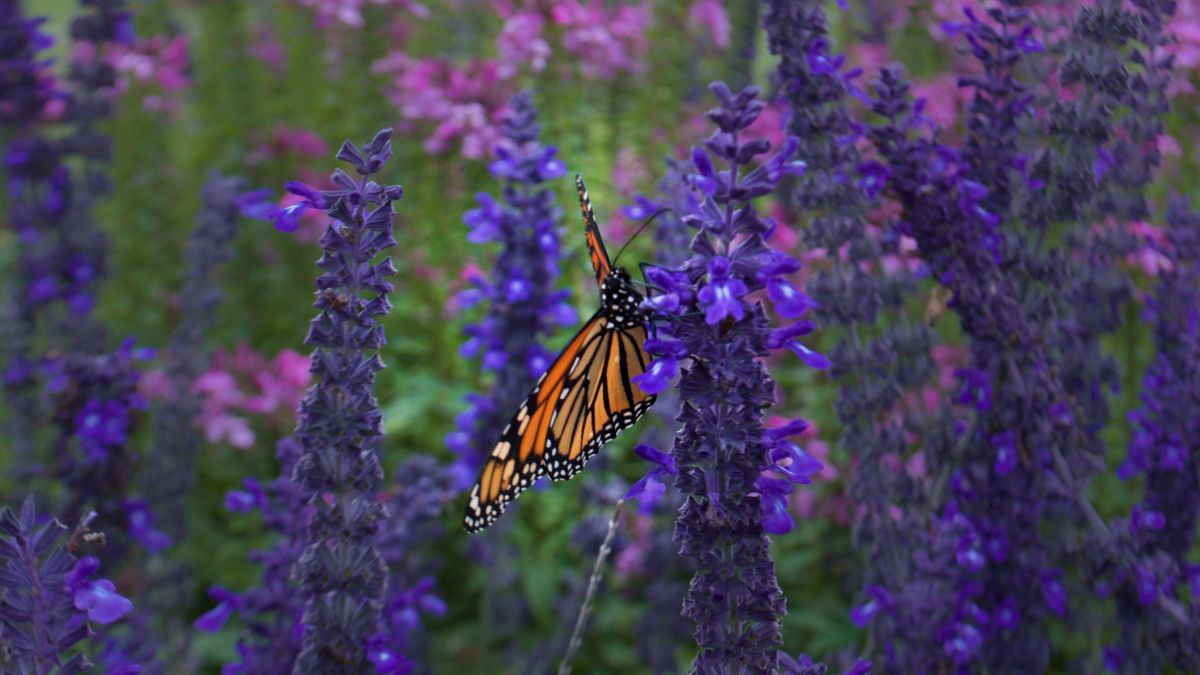
Among the many benefits of Russian sage is the fact that it is not all that likely to get hit by disease or pests.
If, however, you plant Russian sage in soggy soil, that can promote fungal diseases like stem or root rot. These become particularly likely in waterlogged conditions. So, make sure that the soil is draining adequately at all times. Also, do not allow other plants to crowd your Russian sages, or they might not get enough air circulation.
What about pests? Frankly, this plant has a reputation of being more or less pest-free. Once in a while, however, you could experience issues with spider mites, leafhoppers or whiteflies.
Recommended Companion Plants for Russian Sage
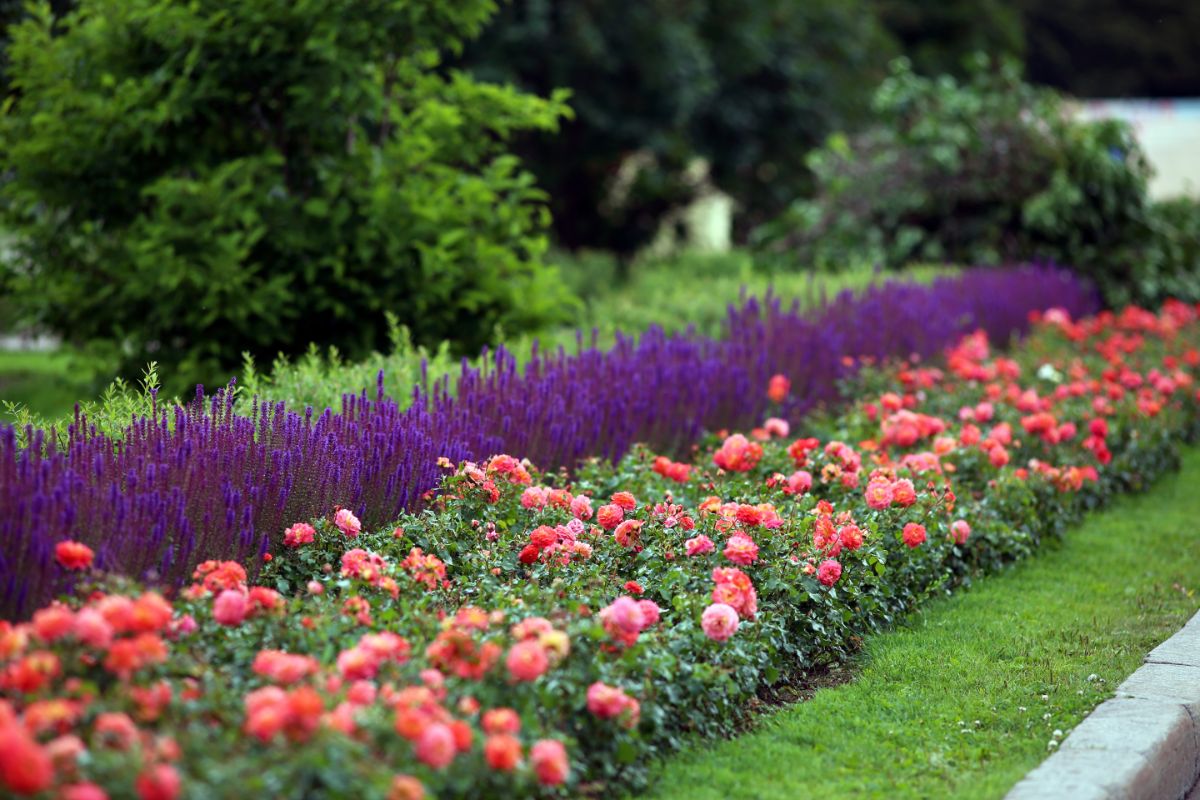
Before you plant Russian sage in your ornamental garden, you should think about companion planting ideas. Here are a few combinations that can look nice:
- Creeping phlox: Like Russian sage, creeping phlox is a natural choice for a rock garden. The blankets formed by creeping phlox can make for a nice contrast between the tall, upright stems of Russian sage plants.
- Blue fescue: These ornamental grasses grow in rock gardens as well, and thrive in full sunlight just like Russian sage.
- “Karl Foerster” feather reed grass: These tall, feathered grasses make a lovely pairing with Russian sage.
- Coneflowers: Echinacea flowers grow nicely through Russian sage, and are ideal for a wildflower garden.
Those are just a few ideas! Because Russian sage is an aromatic plant that is deer-resistant and does not attract pests, it may also work well as a protective companion for plants that pests or animals do favor.
Frequently Asked Questions About Growing Russian Sage
It is not all that common for anything to be eating Russian sage. If it is happening, the most likely suspects are insects of some kind.
You should not need to divide your Russian sage plants often, if at all. In fact, they do not take well to it in many cases, so ideally, you should plant them where you will be happy keeping them over the long term. Avoid division if possible.
Yes, Russian sage is a mint family plant. That family, Lamiaceae, also contains rosemary, oregano, basil, and other cooking spices and herbs.
See the section on Ground Planting. Since it is rare to start Russian sage from seed, this section covers everything you need to know about transplanting.
Russian sages are perennial flowers, which means that they come back every year. Planting these in your flower bed can enhance your landscape for years to come with minimal maintenance required.
Where to Buy Russian Sage
If you are ready to bring this drought-resistant perennial to your garden beds, click on the links below to shop Russian sage cultivars online. Enjoy easy plant care and a long bloom time!

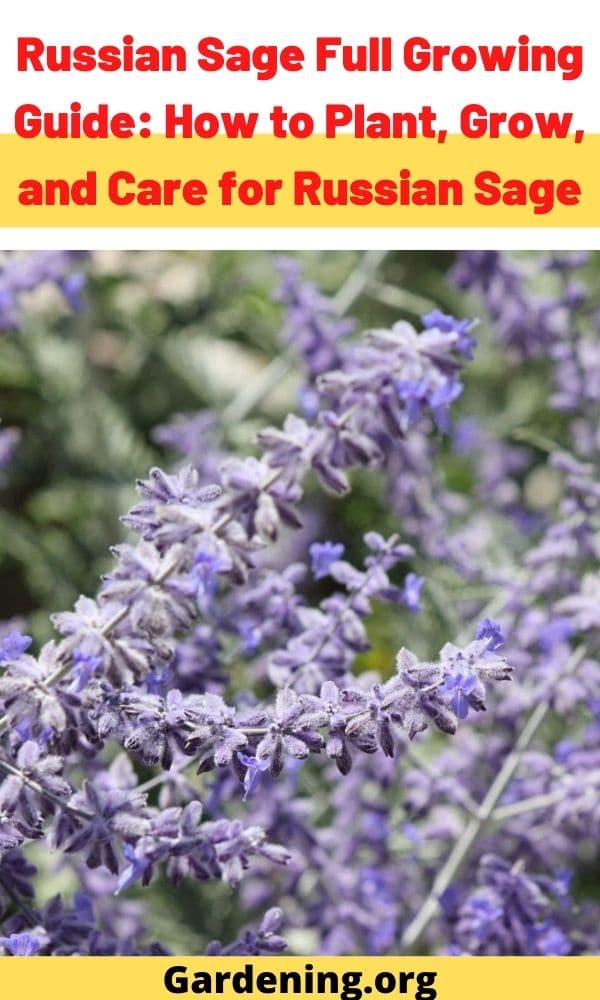
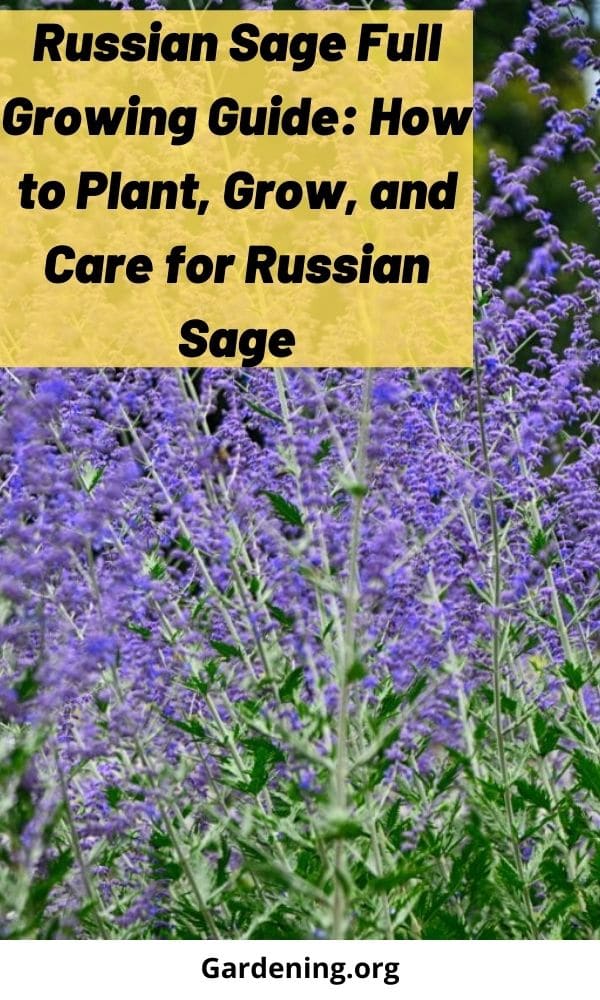

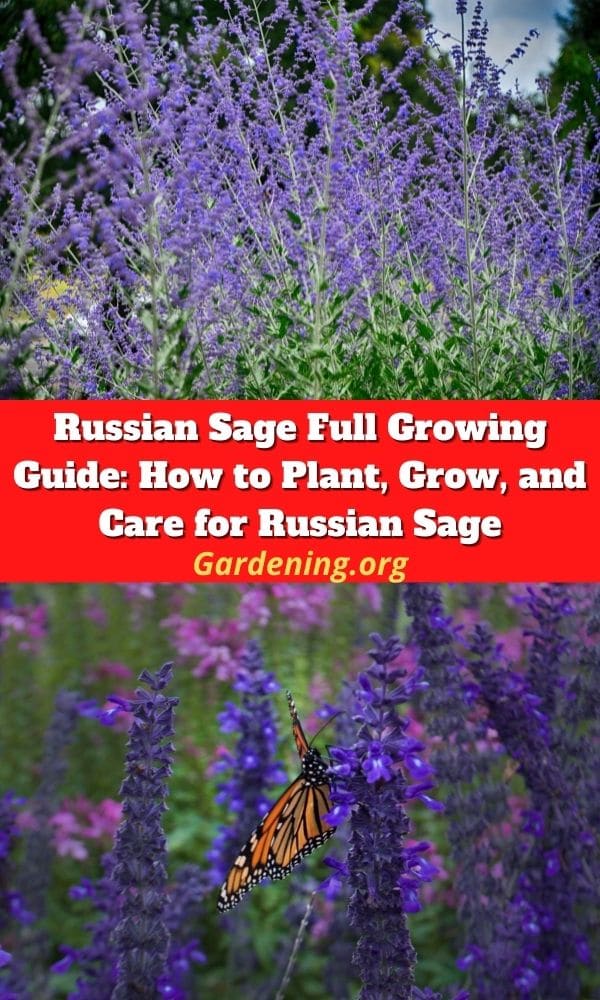
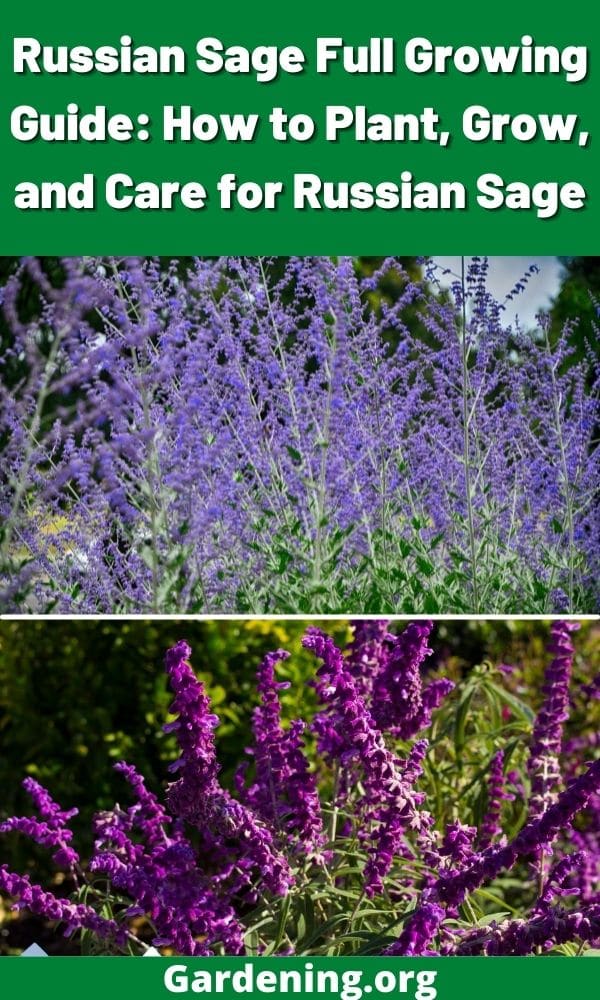

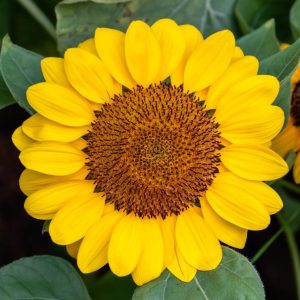
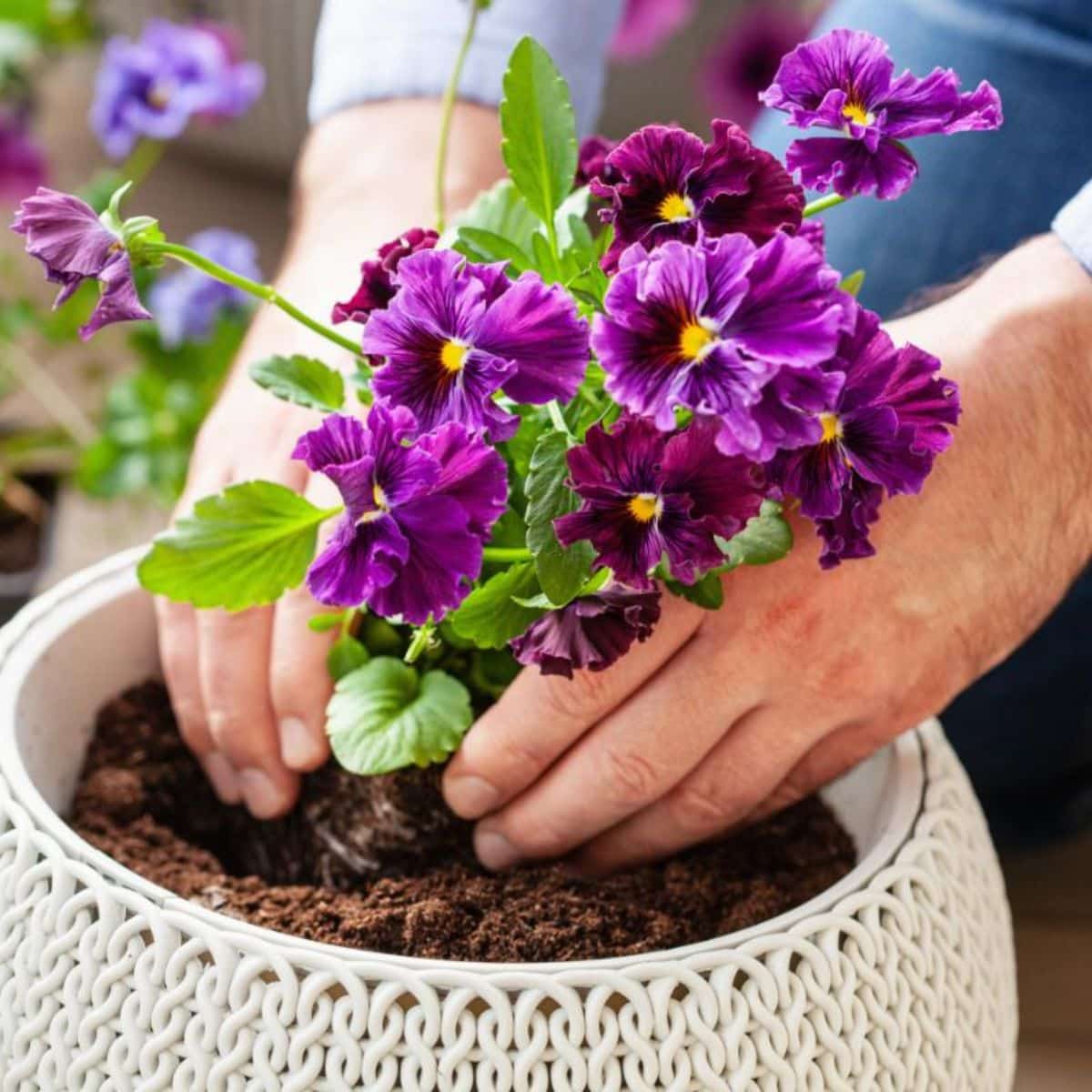
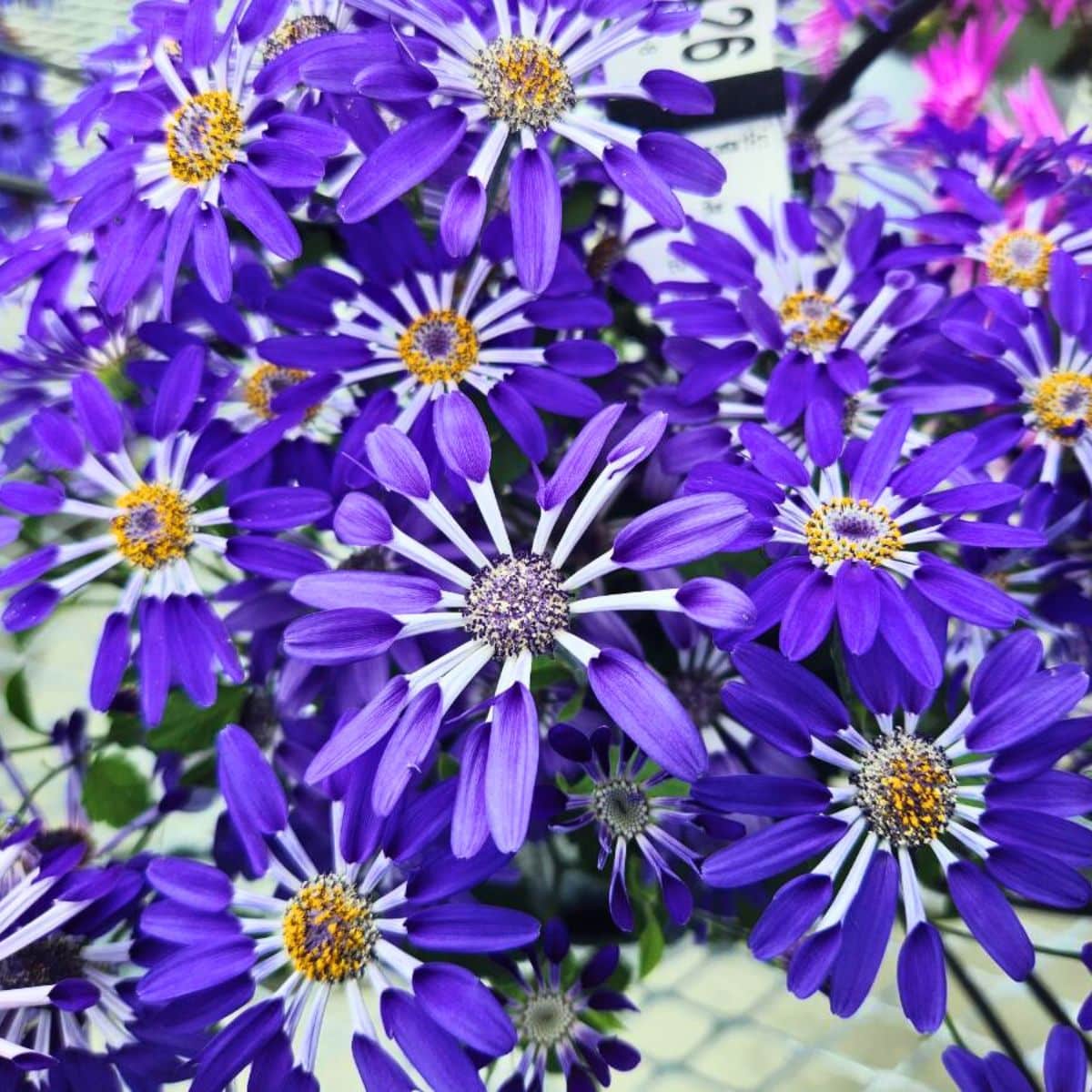
Leave a Reply